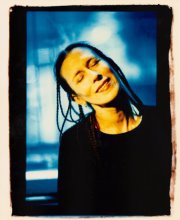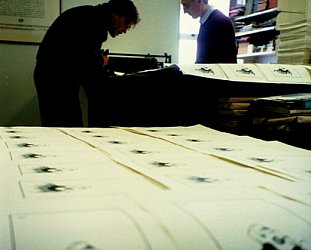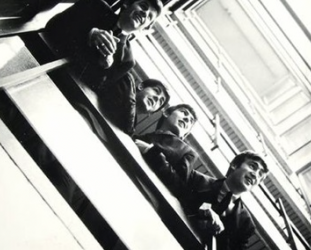Graham Reid | | 2 min read
Meredith Monk, Robert Een: Chinook

New Yorker Meredith Monk (born 1942) has created a world of her own between the vocal art-music of Laurie Anderson, contemporary dance and cutting edge film, avant-theatre and that place Bjork ended up on her 2004 album Medulla which was almost entirely a cappella vocalising.
Monk wrote a fascinating opera for voice and a few instruments (Atlas in ‘92) and almost imposed herself on popular attention when her duet album Facing North (with Robert Eem) was released around the same time. For a minute there you almost felt she’d created that Laurie Anderson/O Superman momentum -- but it wasn’t to be and she remained firmly in the art-music/concert hall world to be championed by the Kronos Quartet, Bjork, John Zorn and hip people in university music departments. And those handing out arts grants and awards in the US.
That is a pity because Monk‘s music can be warm and affecting (it is mostly the human voice after all, so it connects directly) and her entry-level ECM album Impermanence in 2008 (with her own vocal ensemble) was a beguiling aural meditation on the transitory nature of life which took the form of a gentle suite for voices, piano and woodwind.
Originally, as with much of her output, this was conceived as a theatre piece for dancers and musicians (there are video clips on her website) but the minimal nature of the work -- spare piano lines, ethereal vocals -- allows the album to stand on its own.
If Meredith Monk's name is still new to you, that album might be as a good a place as any to start.
 But her scope is vast (although her discography seems rather small, fewer than 20 albums in over 30 years) and embraces documentary film, numerous theatrical performances with her ensemble, instrumental works and some of her pieces have appeared on soundtracks to popular films (eg The Big Lebowski).
But her scope is vast (although her discography seems rather small, fewer than 20 albums in over 30 years) and embraces documentary film, numerous theatrical performances with her ensemble, instrumental works and some of her pieces have appeared on soundtracks to popular films (eg The Big Lebowski).
There can be a stillness at the heart of her music, which she says refers to timelessness and the larger cycles of life. And as a graduate of Sarah Lawrence (where she created her own course between dance, music and visual art) she defies easy categories and is best taken on her own terms, a multi-discipline artist whose references reach so wide as to draw you in.
Monk's art offers worlds within worlds, but at the most simple level of listening to one of her ECM recordings (Dolmen Music and Turtle Dreams in the Eighties; Book of Days, Facing North and Atlas in the Nineties; Impermanence and Songs of Ascension in the past decade) is to be swept into her orbit and be pleasantly cut adrift into enchantment and emotional intensity.
Now in her 70s, Meredith Monk remains a singular figure whose breadth of vision can always startle. In a good way.





post a comment